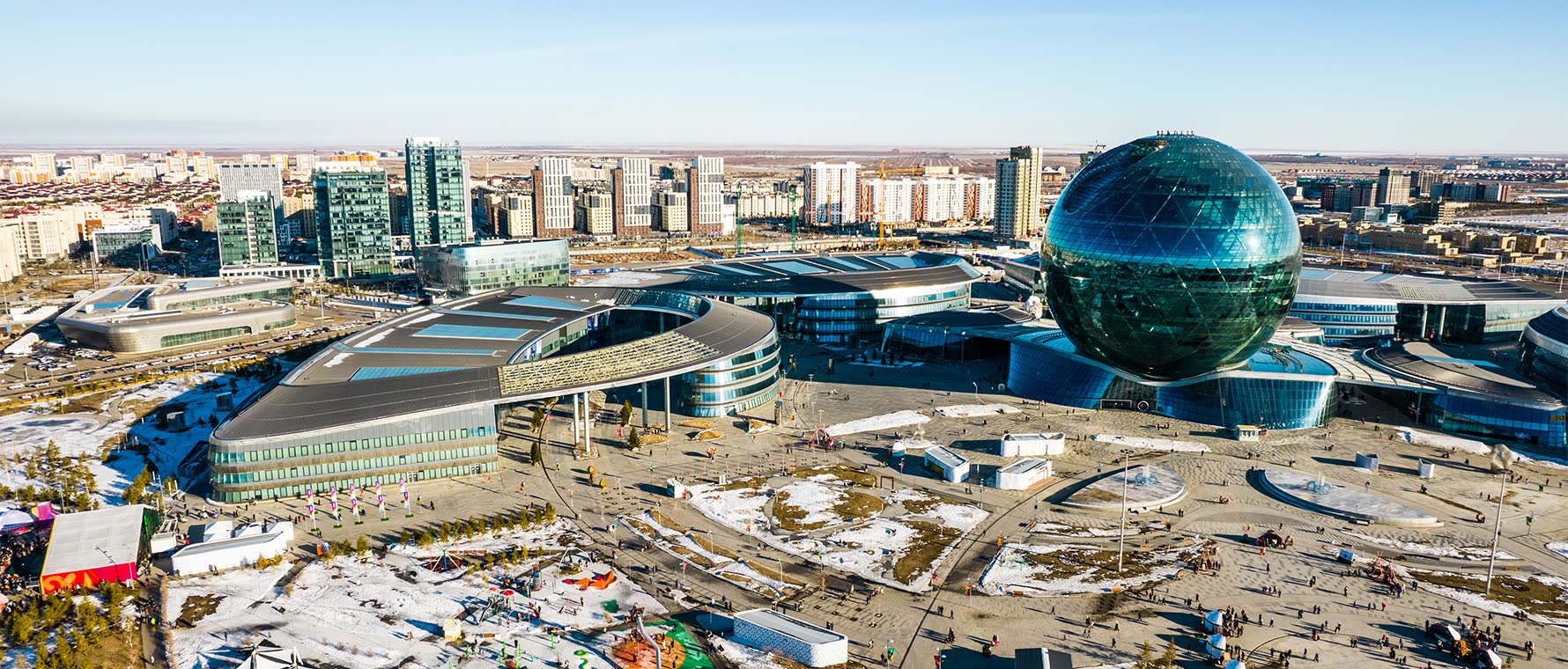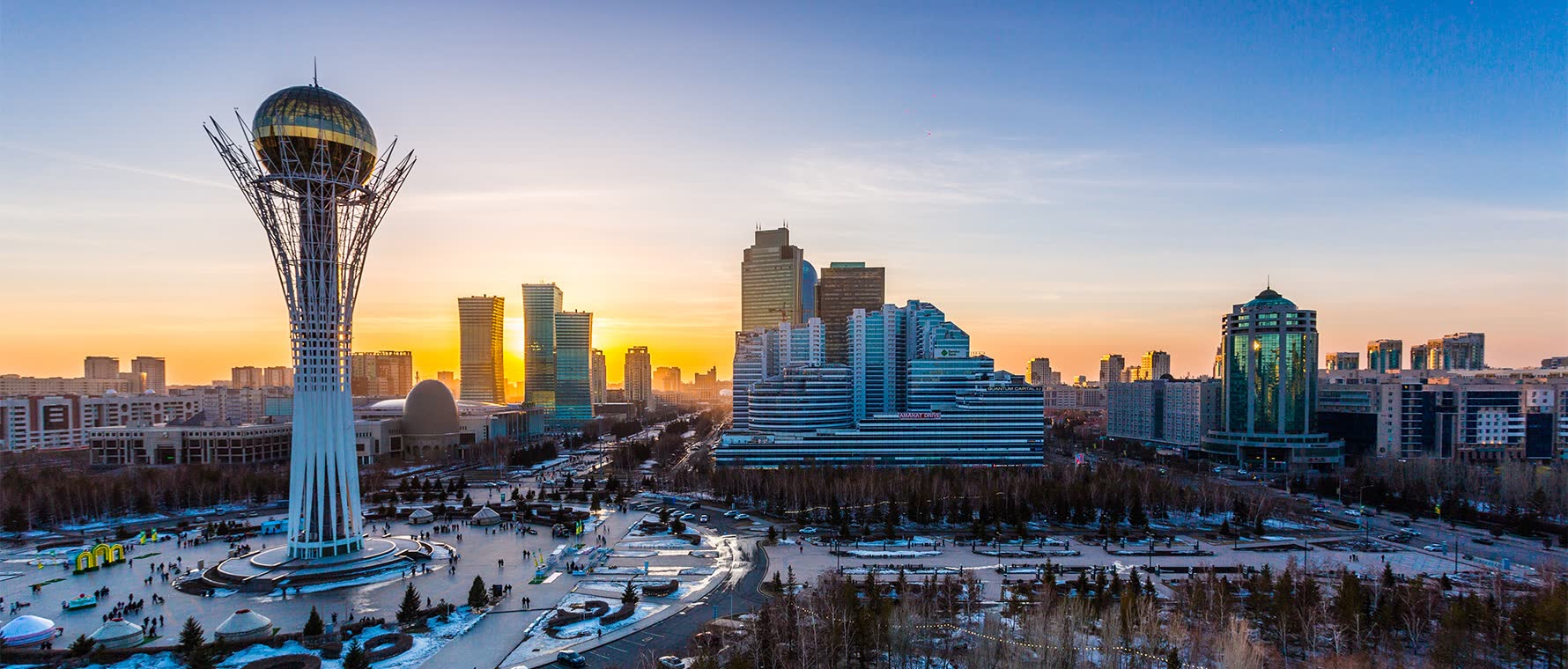Astana capital city of Kazakhstan
Astana is the capital city of Kazakhstan. It is one of the largest and most important cities in the country. Astana is located in the northern part of Kazakhstan, on the banks of the Ishim River. It is situated in the Akmola Region of the country. As the capital of Kazakhstan, Astana is the center of government and administration for the country. It is home to government buildings, foreign embassies, and the Presidential Palace.
Here are some key details about Astana:

Architectural Development: Astana, as it was previously known, underwent rapid development and transformation into a modern city. The city's skyline features futuristic and architecturally significant buildings, such as the Bayterek Tower, the Palace of Peace and Reconciliation, and the Khan Shatyr Entertainment Center.
Economic Hub: Astana serves as an economic hub for the region, with a growing financial sector, business opportunities, and numerous international corporations and organizations operating in the city.
Cultural and Educational Center: The city is home to various cultural institutions, museums, theaters, and educational institutions. The Palace of Peace and Reconciliation, for example, hosts international conferences and events.
Climate: Astana experiences a continental climate with harsh winters and hot summers. Temperatures can drop significantly in the winter, with cold winds and heavy snowfall.
Transportation: The city is well-connected by air, with Nur-Sultan International Airport serving as a major transportation hub. It also has a railway station with connections to other major cities in Kazakhstan and beyond.
Tourism: Astana has become a growing tourist destination due to its modern architecture, cultural attractions, and the historical and cultural significance of the region. The city is a gateway to explore other parts of Kazakhstan, including the nearby Burabay National Park.
Diplomatic Relations: Astana plays a crucial role in diplomatic relations as it houses foreign embassies, and it has hosted international negotiations and summits.
Astana, with its striking architecture and status as the capital of Kazakhstan, is a symbol of the country's modernization and growing international importance. It continues to evolve and develop, making it an intriguing and important city in Central Asia.
The history of Astana, which is now known as Astana, is a relatively recent one, characterized by rapid development, transformation, and a change in its name.
Here's an overview of the history of the city:

Early History: The area around what is now Astana has a long history of human habitation, dating back thousands of years. It was originally inhabited by various nomadic tribes.
Founding of Akmola: The city's history as a settled urban center begins in the 19th century. In 1824, the Russian Empire established a fortress called Akmola in the area. It served as a strategic military and administrative center, as well as a trading post along the Siberian route.
Railway Hub: Akmola's significance grew with the construction of the Trans-Siberian Railway, as it became a major railway hub in the region.
Renaming to Tselinograd: In 1961, the city was renamed Tselinograd, which means "Virgin Lands City," reflecting its role in the Soviet Union's Virgin Lands Campaign, an effort to increase agricultural production in the region.
Capital of Kazakhstan: In 1997, the city was designated as the new capital of Kazakhstan, replacing Almaty. The decision to move the capital was made for strategic and geopolitical reasons, as Astana (as it was known at the time) is more centrally located within the country. The move was also aimed at reducing the economic and political dominance of Almaty.
Rapid Development: After becoming the capital, the city underwent a period of rapid development and modernization. The government invested heavily in infrastructure, construction, and architectural projects.
Modern Capital: Today, Astana is a modern and rapidly growing capital city with a unique skyline that features futuristic and architecturally significant buildings. It serves as the political, economic, and administrative center of Kazakhstan.
Astana's transformation from a small fortress town in the 19th century to the capital of Kazakhstan reflects the country's ambitions for development and modernization. It continues to play a crucial role in Kazakhstan's political, economic, and cultural life, as well as on the international stage. The city's history is a testament to the dynamic changes and growth that have taken place in Central Asia in recent decades.